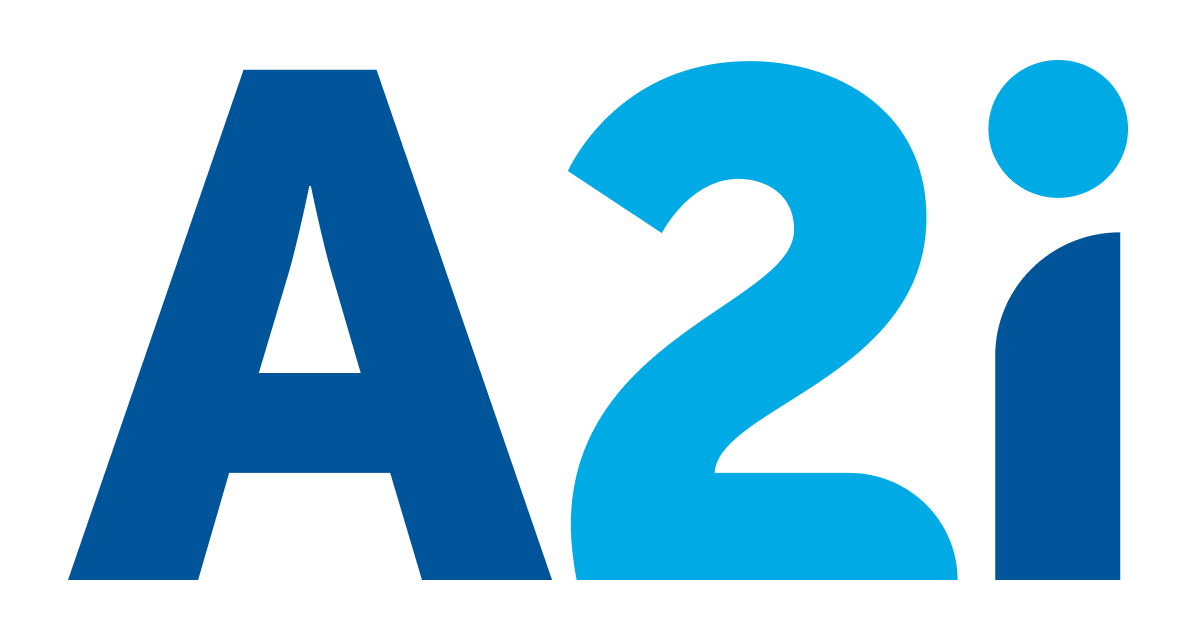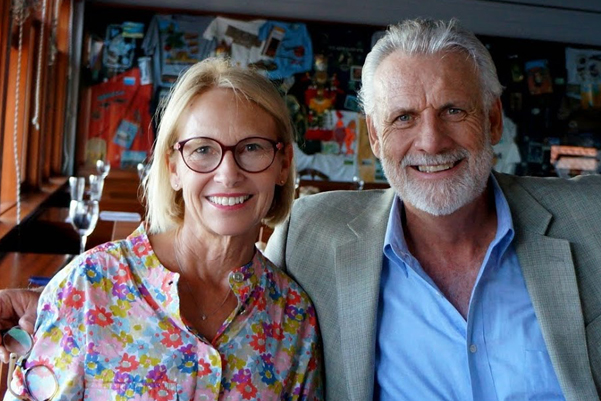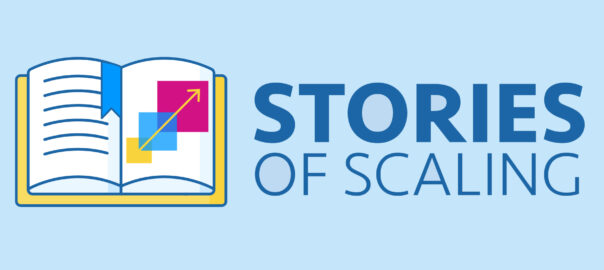By Adrienne Woods

A2i is a teacher support system designed to help teachers individualize reading instruction and developed with the goal of getting all children reading at grade level by the end of third grade. A2i applies patented time- and grade-sensitive algorithms that produce reports containing recommendations for the optimal number and type of instructional minutes that are unique to each student’s needs.
Invent: A New Solution to Rise Above the Reading Wars

Carol Connor, Founder of A2i, and Jay Connor, former CEO of Learning Ovations.
The reading wars had been waged for decades. The country was split into two competing factions: one that supported whole language or balanced literacy programs, and one that supported phonics-based instruction. Rather than force teachers to pick a side, Carol Connor took a broader perspective as she laid the groundwork to develop A2i (formerly Assessment to Instruction).
“The reading wars were the main hurdle to getting a solid solution to teaching reading,” says Jay Connor, Learning Ovations’ founder and former chief executive officer, adding: “What A2i does is it looks at that landscape and says, ‘well, wait a second.’ The question is not whether to teach phonics or whole language, it’s ‘What does the child need?’”
The reading wars became so heated that, in 1997, Congress established the National Reading Panel to deliberate on which approach was most effective for teaching children to read. A2i’s mission aligns with the panels’ main findings:
- Reading instruction should be individualized to the child’s unique skills and developmental trajectory;
- Instruction should be systematic and explicit; and
- Reading and, especially, phonics instruction must be taught in small groups.
A2i was grounded in a desire to make it possible for teachers to integrate these three elements into their classroom practice.
For nearly 15 years, Carol led a series of research studies, supported by a series of grants totaling more than $9M from the Institute for Education Sciences (IES), to elicit insights into individualized literacy instruction and to develop and test the efficacy of the A2i system. Her husband, Jay, founded the startup Learning Ovations, Inc in 2013 to test, support, and eventually launch the A2i Professional Support System into classrooms nationwide, with the help of a $14.65 million Education Innovation and Research (EIR) scale-investment grant in 2017.
Designing a prototype. The team started by simply observing classrooms to understand what types of skills children present with, what kinds of instruction they received, and how well that instruction predicted reading growth. These observations revealed a need for precision in the exact types, amounts, and combinations of instruction a student required based on their assessment scores.
While it certainly helped to teach phonics to a child that needed it, the team noticed that if phonics instruction was mismatched to a child who already knew phonics, their reading progress could degrade. “As the year goes on, we see big changes in how much work students can do independently and where they should be focusing their time depending on whether they’re reading below, at, or above grade level,” Jay explains.

Sarah Siegal, Sr. Director of Research & Validation at Scholastic.
Carol’s research noted that small groups could be four times more effective than large group or whole-class instruction. According to Jay, however, what set A2i apart from the competition was its approach to making individualization practical for teachers when there are dozens of kids in each classroom.
In a series of randomized control trials, the team demonstrated that more than 90% of children receiving 3 continuous years of A2i could be reading at or above grade level, irrespective of their skills following school entry. As Sarah Siegal, A2i’s senior director of research and validation at Scholastic and former vice president of research at Learning Ovations, explains, their research led them to the conclusion that the closer teachers adhered to the instructional minutes recommended by the A2i algorithm, the better student outcomes were.
Apply: Keeping Teachers Centered in the Process
A2i is often cited as a success story for scaling evidence-based products, which culminated in its 2022 sale to Scholastic. But a major part of A2i’s success can be attributed to their focus on satisfying their end users: teachers. This focus started early in the development of A2i with Carol’s effort to actively engage teachers as co-designers of the research. Once the team had developed and validated an algorithm to match reading instruction minutes to different students, Carol started to really focus on how to make sure the content was usable and useful for teachers.
“Carol fully understood that this was only going to be meaningful if it had that stamp of good practice coming from teachers having been heavily involved throughout,” Jay says. Many teachers helped to develop some of the A2i tools, and the team made sure the administrators of the schools understood and bought into the importance of the research practice A2i was building. “We didn’t want to just put a huge brick on every teacher’s table and say, ‘good luck.’ We needed A2i to be very responsive to teacher needs, so we tried to anticipate where the stumbling points were going to be through our conversations and work with teachers.”
Pivoting with user feedback. In response to feedback from teachers and other stakeholders in school districts, the team made an early series of changes designed to ease A2i’s transition to market. One of these key adaptions was to start indexing the school’s existing curriculum to the recommendations from A2i, so they could align the recommendations with the materials teachers were already using.
Becoming curriculum agnostic allowed them to match the A2i recommendations and groupings to any English/language arts curriculum and activity and determine the amount of time each group should engage in an activity.
The assessments were another critical inflection point. Originally, the A2i technology was available to support teachers. However, a key aspect of the intervention was to assess students 3 times / year via one-to-one, paper-and-pencil testing that was typically carried out by graduate students.
This process was repetitive, intrusive, and burdensome to teachers and ultimately would have been a major barrier to successful scaling. So, the A2i team automated this process by expanding access to the program to allow students to take the assessment on their own. Students could take an assessment on a tablet or computer, and the technology would automatically feed recommendation algorithms to their teachers.
Understanding the customers. While Carol was an expert in literacy research, Jay had a background in large community systems that focused on big picture challenges, like reducing poverty and ending homelessness. As the team started thinking about the future of A2i and taking the product to market, Jay’s background allowed him to consider the role their end users, teachers, played in decision making and budgeting.
In 2014, the team received additional Small Business Innovation Research (SBIR) funding support from the Department of Education to empirically address the question: “If we’re going to be taking this product out to the marketplace, who is our customer?”
They learned that although teachers were the end users, they did not often turn out to be the customers. Teachers rarely had the independent decision-making and purchasing power that would allow the company to scale beyond classrooms, schools, or districts. “The customer really was the system,” Jay explains, “whether it was schools, the school district, or all the way up to the state-level departments of education.”
But this finding led to new questions about how they would engage the administrations within school districts. Understanding what information administrators need to be confident that their teachers are implementing effective reading instruction changed how Carol thought about the research and developing the product.
With this revelation, her team transitioned away from solely focusing on teachers being the end users. They began to develop reports that the administration could feed back, either to the state or district, to solve their needs, which in turn allowed key decision-makers to buy in and champion the product as well.
– Jay Connor
Transition: Finding the Right Fit with Scholastic
Near the end of the pandemic, the team realized that they needed to increase their marketing presence in schools to continue to fund their growth and development. At the same time, Jay reports that they were approached by multiple venture capitalists and other sales organizations looking to respond to the increased demand for products that have the potential to accelerate learning in order to address pandemic-related losses.
Throughout this courtship, Jay focused on children reading at grade level by the end of third grade, in part to preserve Carol’s legacy after she passed away during the pandemic. Based on previous experience, Jay was concerned that venture capital funds would market the product as a series of individual parts rather than a whole intervention in order to achieve their target outcomes.
Carol’s biggest concerns regarding A2i’s transition to market came from seeing evidence-based educational practices fail to achieve their promised effect in the marketplace. Jay knew that the typical, à la carte venture capital approach wouldn’t be consistent with their scaling goals in an education context (i.e., getting all children reading at grade level by the end of third grade).
The team’s conversations with Scholastic began about a year before they closed the deal. According to Jay, Scholastic has one of the largest presences in school districts and has historically focused on quality reading materials. However, they had not yet explored the tools and technologies that help children learn to read those materials in the first place.
It was a natural fit, Jay says: “Scholastic had the materials; we had the tools and traction to help more and more children succeed at reading. So, there was a really nice meeting of the minds; we were all kind of on the same page.”
Moving beyond assessments. Jay says that Scholastic was trying to develop an assessment of their own at the time they approached A2i. Assessments are a standalone educational product that have historically scaled well because every district has purchase mandates for them. It’s often harder to scale innovations that don’t align with a specific budget line item.
However, in conversations with Learning Ovations, Scholastic moved away from looking at A2i as primarily an assessment tool with some other features. Scholastic came to understand it as a whole-system solution that could reposition them as a medium to deliver reading outcomes aligned with the results requested by the National Reading Panel—a solution that included an assessment vehicle that could be used for the entire suite of Scholastic curriculum materials.
According to Jay, however, A2i was only prepared to sell if their entire team of 30 people would be able to move to and integrate into Scholastic. This was key to getting Scholastic to take responsibility for the scaling success of A2i as an integrated system rather than as a loose collection of parts.
Benefits to partnering with researchers. According to Jay, researchers typically come with lots of data, which represents a significant advantage for Scholastic. A2i maintains a huge warehouse of embedded research data about children in multiple grades, schools, and districts, allowing for continual reinvestment and reanalysis. This access to data helps the team make new insights available to partners as new digital products emerge, including those with usage data like how students respond to individual questions or how long they’re logging into specific books. “There’s so much potential value with the scope of Scholastic to just see what students are doing and how we can best predict what that student would need going forward.”
Lessons Learned from Research to Market
– Jay Connor
1. Have a true north.
Jay described the importance of having a clear and compelling mission and an understanding of how your innovation fits into the educational market.
“You’re creating a roadmap, if you will, for that research that you’re trying to develop. Where is it going to go? Where is it actually going to fit?” It’s important to understand what similar innovations are currently being used in the market to solve identified problems and how they are alike or unlike yours.
“But once you get into the weeds of business and marketing,” Jay cautions, “the other side of that equation is to really understand that every one of your genius, wonderful, first ideas probably won’t work. You just have to be very understanding and very much at peace with that.”
2. Hire specialized team members.
Regardless of a company’s scaling goals, hiring specialized team members can streamline work and increase efficiency. One of the biggest differences Sarah noticed after transitioning from a small startup to Scholastic was the specialization of divisions and roles. Where team members previously wore multiple hats on a day-to-day basis, now there were whole departments that allowed the team to work faster and more efficiently.
“To have a whole department committed to branding and design makes the process much quicker and easier than me designing a PDF on Google,” Sarah says.
– Sarah Siegal
3. Be clear.
Finally, when pitching your solution to a problem to potential investors, “you cannot over clarify or over communicate,” Sarah says. “Innovation inherently leads to confusion if something’s new or different, especially in an education space where everything also feels kind of inherently familiar. It can be easy to have misunderstandings you don’t even realize are happening. Practice your elevator speech, make sure you have an overview of exactly what your innovation or your product or solution is, and make sure that it’s not just you who understands it—whoever your audience is does, too.”
Key Takeaways
- Engage users in development and be responsive to feedback: A2i’s success is attributed to prioritizing teacher satisfaction from early development stages. Teachers were actively involved in A2i’s design, ensuring usability and relevance. Adaptations to enhance usability were made at several key points based on teacher and stakeholder feedback.
- Understand who is a user and who is a customer: The A2i team recognized teachers as end users but understood administrators were key decision-makers. So, they transitioned from focusing solely on teachers as end users to engaging administrators with tailored reports.
- Find the right partner to transition to market: A2i aligned their expertise in reading intervention and research with Scholastic’s vast educational presence and specialized team members, leading to a holistic solution for improving reading outcomes. A2i also insisted on the entire team moving to Scholastic to ensure their system would be implemented as a unified solution as intended rather than broken into parts.
- Be passionate, clear, and adaptable: It is important to have a clear, compelling vision, to be able to effectively communicate that vision to potential investors, and to be flexible when faced with the realities of transitioning an idea to market at scale.


